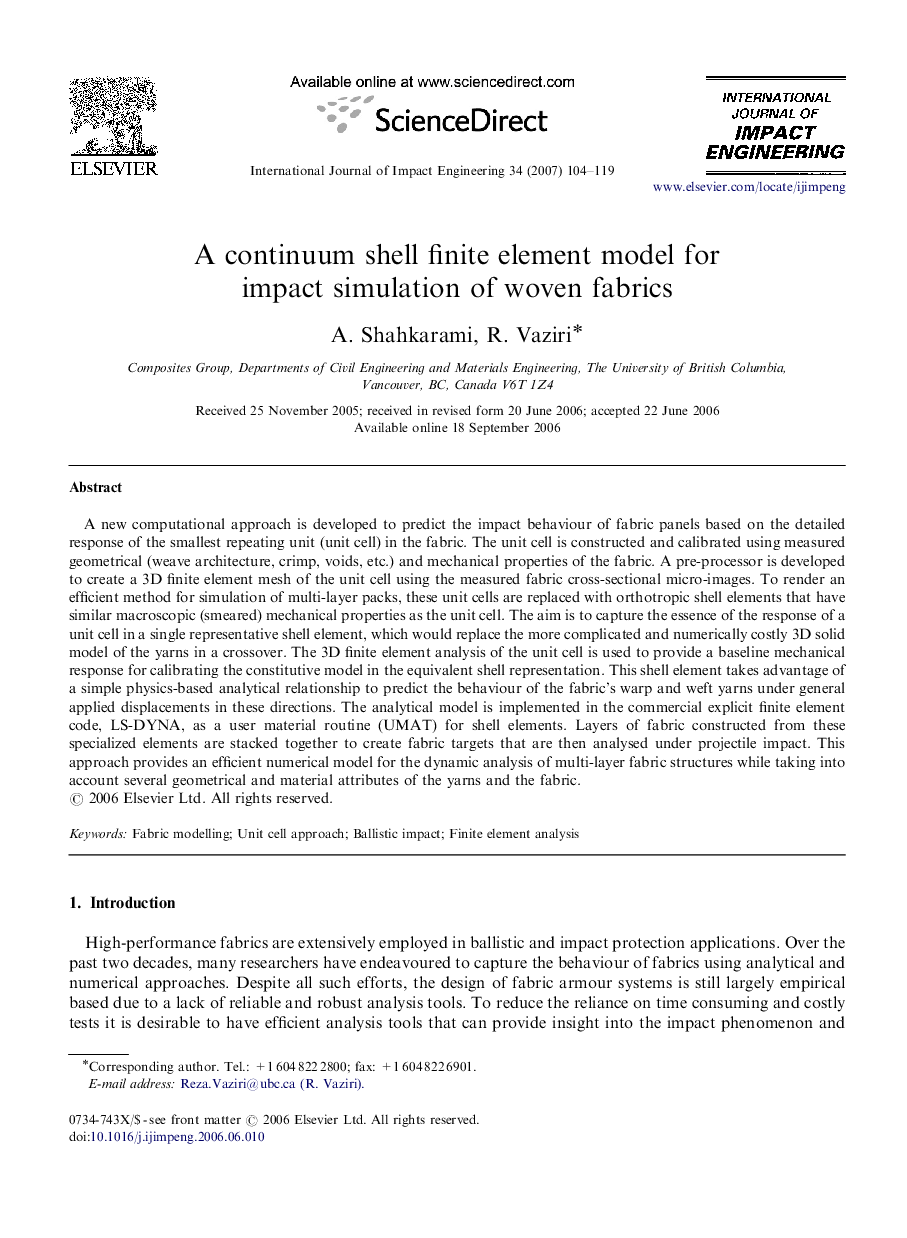| Article ID | Journal | Published Year | Pages | File Type |
|---|---|---|---|---|
| 779824 | International Journal of Impact Engineering | 2007 | 16 Pages |
A new computational approach is developed to predict the impact behaviour of fabric panels based on the detailed response of the smallest repeating unit (unit cell) in the fabric. The unit cell is constructed and calibrated using measured geometrical (weave architecture, crimp, voids, etc.) and mechanical properties of the fabric. A pre-processor is developed to create a 3D finite element mesh of the unit cell using the measured fabric cross-sectional micro-images. To render an efficient method for simulation of multi-layer packs, these unit cells are replaced with orthotropic shell elements that have similar macroscopic (smeared) mechanical properties as the unit cell. The aim is to capture the essence of the response of a unit cell in a single representative shell element, which would replace the more complicated and numerically costly 3D solid model of the yarns in a crossover. The 3D finite element analysis of the unit cell is used to provide a baseline mechanical response for calibrating the constitutive model in the equivalent shell representation. This shell element takes advantage of a simple physics-based analytical relationship to predict the behaviour of the fabric's warp and weft yarns under general applied displacements in these directions. The analytical model is implemented in the commercial explicit finite element code, LS-DYNA, as a user material routine (UMAT) for shell elements. Layers of fabric constructed from these specialized elements are stacked together to create fabric targets that are then analysed under projectile impact. This approach provides an efficient numerical model for the dynamic analysis of multi-layer fabric structures while taking into account several geometrical and material attributes of the yarns and the fabric.
